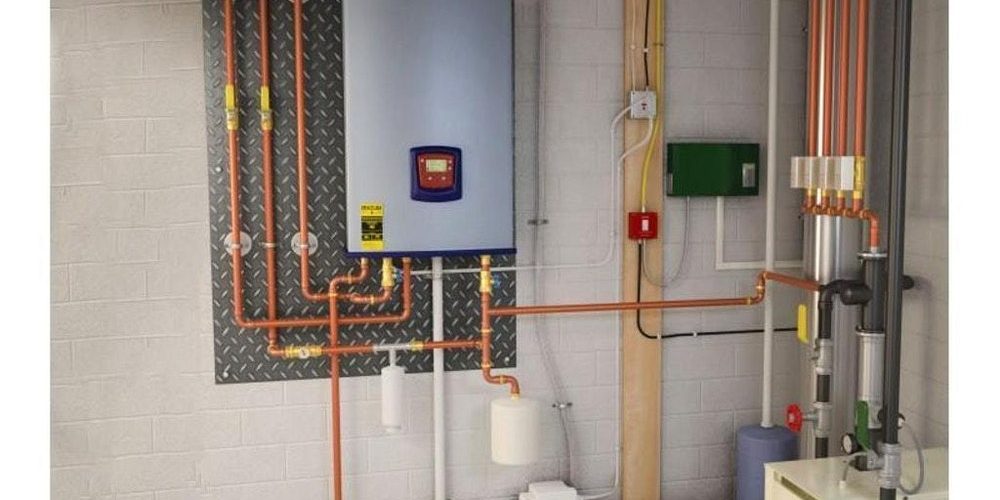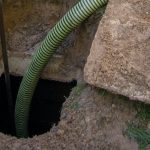High-efficiency furnaces save on energy use and are getting more common every year.The fire in a gas furnace is a reaction between natural gas or propane and oxygen. The furnace burns methane or propane and oxygen to produce water and carbon dioxide. But the flame also needs air and therefore brings in atmospheric nitrogen, which makes up 70% of the atmosphere, and the fire is hot enough to force the nitrogen to react with oxygen. The resulting nitrogen dioxide and nitrous oxide dissolve into the water vapor in the exhaust stream to form nitric acid.
One of the results of the heating process is that condensation occurs in the unit and it is not clean water but a dilute solution of nitric acid. The amount of condensate produced by a high-efficiency furnace is approximately 1 gallon per 100,000 Btu/h.
For example, a 150,000 Btu furnace running eight hours per day would create 11 gallons of condensate.
This acidic condensate poses two potential problems for septic systems — freezing and bacteria impacts.
Freezing
Problem:
When this condensation builds up, it slowly trickles out of the unit and into the plumbing that may be connected to a septic system. In cold climates, this water can cause freezing problems in the septic system because of the slow, low flow. When the furnace is in operation this water typically trickles out of the unit, totaling 5 to 10 gallons on a cold day.
Solution:
A condensate pump or other device to collect the water can be used if the home is left vacant for extended periods of time so water is not trickling out, causing freezing problems.
Bacteria
Problem:
The acidic nature of the condensate could negatively impact the beneficial bacteria in the system. The bacteria in septic tanks and advanced treatment units prefer a neutral pH in the range of 6.5 to 7.5. Furnace condensate typically ranges between 3.0 and 5.0, but people have measured condensate below 2.0. The pH scale is a logarithmic scale, so a fluid with a pH of 2 has 10 times the acidity of a solution with a pH of 3. A pH of less than 4 can damage drainage pipes, septic tanks, advanced treatment units and other materials handling this water.
Solution:
You could route this water to another location such as a small below-ground rock pit. Surfacing this effluent is not advisable due to freezing concerns. If it will enter the septic system a system to neutralize the liquid condensate may be needed. Typically, it is an inexpensive section of clear pipe filled with crushed limestone or marble chips. Then the acid will be neutralized by the limestone, raising the pH. The pipe is clear so maintenance professionals can inspect and replace it before all the limestone is dissolved. These neutralizers can be bought at larger hardware stores, plumbing suppliers and online.
If you are designing and installing a new septic system, you should ask the homeowner about the furnace and if it is high-efficiency, particularly in colder climates where the volume of condensate will be higher. It is also wise to ask if the home is used seasonally or if the owners travel frequently over the winter while leaving the furnace on. If you are troubleshooting an existing system, checking the pH of the tank to make sure it is in the neutral range is always wise, and inquire about the furnace if the pH is below 6.
About the author
Sara Heger, Ph.D., is a researcher and educator in the Onsite Sewage Treatment Program in the Water Resources Center at the University of Minnesota, where she also earned her degrees in agricultural and biosystems engineering and water resource science. She presents at many local and national training events regarding the design, installation and management of septic systems and related research. Heger is the President-Elect of the National Onsite Wastewater Recycling Association and she serves on the NSF International Committee on Wastewater Treatment Systems. Ask Heger questions about septic system design, installation, maintenance and operation by sending an email to kim.peterson@colepublishing.com.




